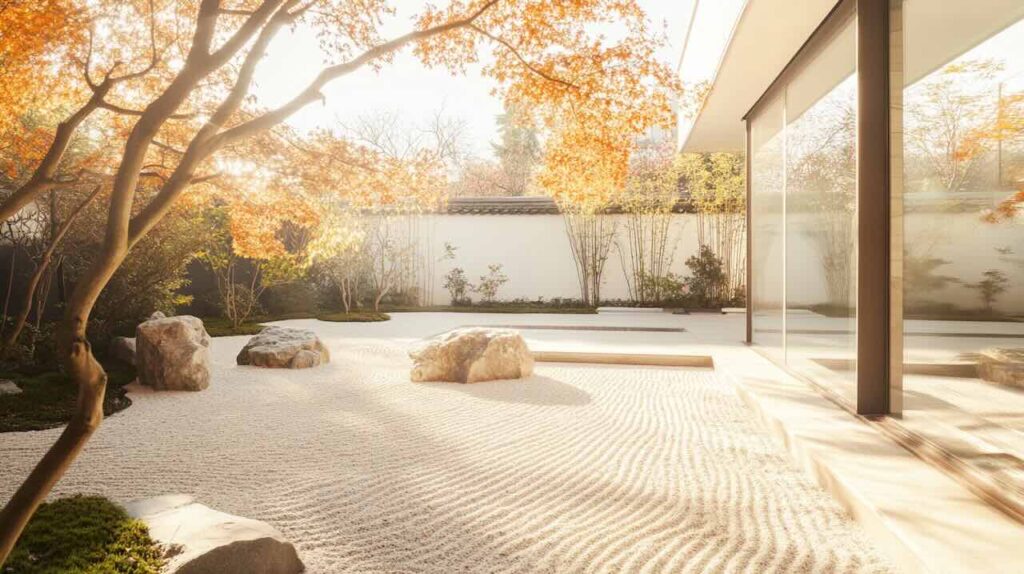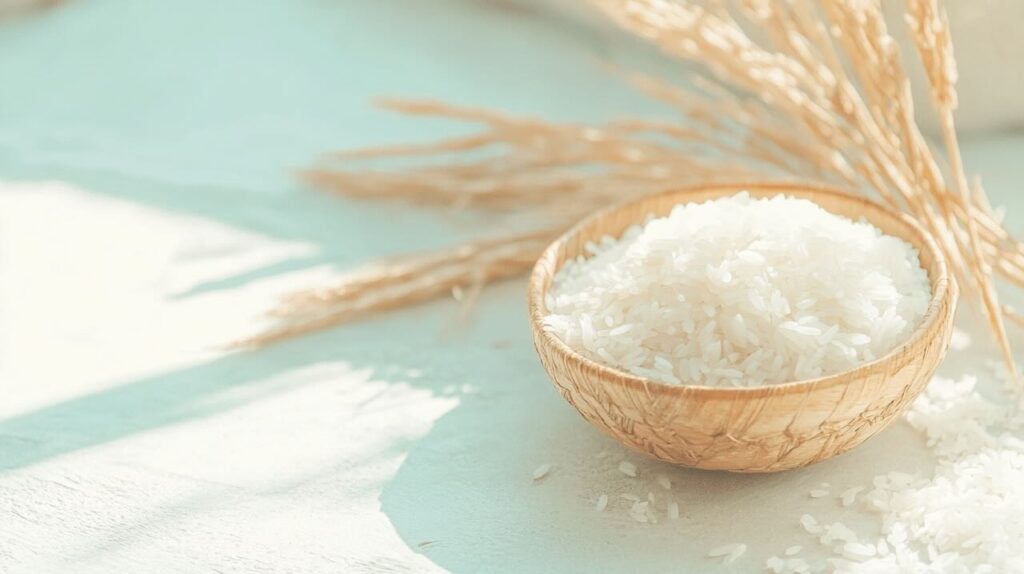What Is Karesansui?
Karesansui (枯山水) — often translated as “dry landscape garden” — is one of Japan’s most recognizable and serene cultural forms. Instead of using ponds, streams, or lush greenery, Karesansui gardens rely on rocks, sand, and gravel to symbolize mountains, rivers, oceans, and even cosmic forces.
These abstract, minimalist gardens are intimately tied to Zen Buddhism, offering a space for meditation, reflection, and spiritual contemplation. Perhaps their most iconic feature is the meticulous raking of gravel into wave-like patterns, known as samon (砂紋), which symbolize water currents, impermanence, or the ever-changing nature of life.
Famous examples of Karesansui include Ryoan-ji and Daitoku-ji temples in Kyoto — destinations often regarded as the pinnacle of Zen aesthetic experience.
Is Karesansui a Purely Japanese Invention?
Although Karesansui is widely celebrated as a quintessential Japanese art form, its origins are more complex and reveal a rich history of cultural borrowing and transformation — particularly from ancient Chinese garden design.
1. The Influence of Chinese “Shanshui” Landscape Tradition
The roots of Karesansui trace back to China’s Shanshui (山水, “mountain-water”) landscape paintings and garden philosophy. These classical Chinese works didn’t aim to replicate nature literally but sought to capture its spiritual essence through abstraction.
- Chinese gardens often recreated mountain ranges, rivers, and valleys using stones, water features, and carefully arranged plants.
- These design principles traveled to Japan along with Buddhism during the Asuka and Heian periods (6th–12th centuries).
- Japanese monks and aristocrats initially adopted these concepts into pond gardens (chisen kaiyu-shiki teien).
- Over time, especially during Japan’s Muromachi period (1336–1573), these influences evolved into fully abstract dry gardens emphasizing rock, sand, and negative space — giving birth to what we now recognize as Karesansui.
In this sense, Karesansui is not purely Japanese nor purely Chinese; rather, it is a uniquely Japanese reinterpretation of imported Chinese aesthetic and spiritual ideals.
2. The Role of Zen Buddhism
Zen Buddhism profoundly shaped Karesansui’s evolution:
- The act of raking gravel became a meditative practice for monks, embodying Zen’s focus on mindfulness and discipline.
- The patterns symbolize impermanence (無常, mujō) — reminding practitioners of life’s transient nature.
- Empty space invites mental clarity and non-attachment, central tenets of Zen teaching.
- The sparse composition eliminates distractions, allowing one to contemplate the essential beauty of form and emptiness.
Karesansui thus became not just a garden, but a tool for spiritual training.
3. How Historical Turmoil Cemented Karesansui’s Popularity
During the Ōnin War (1467–1477) — a devastating civil war that plunged Kyoto into chaos — maintaining water-fed gardens became increasingly difficult. Dry gardens, by contrast, required minimal upkeep.
As warlords and Zen temples sought both austerity and beauty, Karesansui rapidly became the dominant garden form of the period, offering both practical simplicity and profound spiritual resonance.
4. Karesansui vs. Western Rock Gardens
Though sometimes compared to Western rock gardens, the two traditions differ sharply:
| Feature | Karesansui (Japan) | Rock Gardens (West) |
|---|---|---|
| Use of Water | Abstract representation | Actual water or none |
| Use of Plants | Minimal or none (except moss) | Central focus |
| Symbolism | Deep Zen spiritual meaning | Decorative or botanical |
| Artistic Role | Viewer completes scene mentally | Primarily visual display |
| Purpose | Meditation, abstraction | Aesthetic, horticultural |
Karesansui operates as an abstract, interactive art form, encouraging viewers to complete the landscape in their imagination.
5. The Global Influence of Karesansui Today
In recent decades, Karesansui has spread far beyond Japan’s temple walls:
- Miniature Zen gardens are now popular worldwide as desktop stress-relief tools.
- Architects and landscape designers incorporate Karesansui principles into modern minimalist architecture, courtyards, and public spaces.
- Contemporary artists borrow Karesansui motifs for sculptures, installations, and digital media, merging Zen philosophy with modern design aesthetics.
- Its emphasis on calm, simplicity, and mindfulness has made it highly compatible with modern wellness culture.
Why Is Karesansui So Fascinating?
Part of Karesansui’s enduring appeal lies in its subtle balance between form and emptiness:
- Rocks become distant islands or towering mountains.
- Raked gravel becomes flowing rivers or boundless oceans.
- Empty spaces evoke infinite potential, inviting introspection.
Unlike gardens bursting with color and activity, Karesansui invites silence, imagination, and inward reflection. The viewer completes the garden in their own mind, making it a deeply personal and ever-changing experience.
Conclusion
While Karesansui is deeply embedded in Japanese culture, its story begins with the artistic and spiritual traditions of ancient China. Over centuries, Japanese Zen monks and artists distilled these ideas into an elegant, minimalist garden form that transcends physical nature to engage the mind and spirit.
Today, Karesansui continues to captivate visitors from around the world — not just as a relic of the past, but as a living philosophy of simplicity, mindfulness, and inner peace. In an increasingly noisy world, its silent landscapes remain as relevant and powerful as ever.


